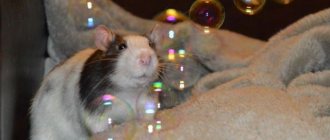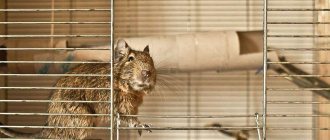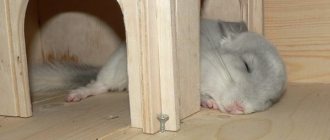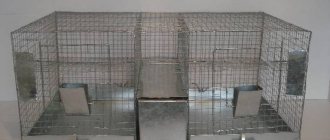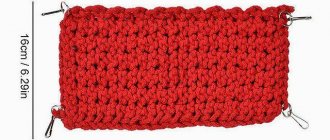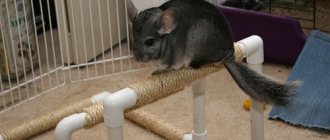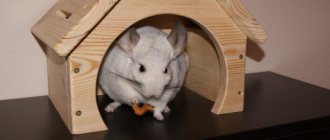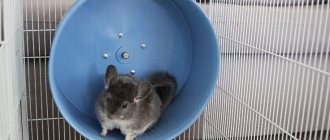Chinchillas need a place to sleep, as sleeping on the floor is not very comfortable. You can buy a house, but not everyone likes it, and sometimes there is simply nowhere to put it in a small cage. Therefore, people prefer to make a hammock for a chinchilla with their own hands. This saves money and time, since making a hammock is not difficult at all, and the necessary materials will always be at hand.
If you decide to make a hammock for a chinchilla with your own hands, then to do this you need to find out what material you need to choose and how to secure it correctly. In this article you will find answers to all questions, as well as instructions on how to make a hammock for a chinchilla and examples of how other animal owners made it.
The material for the hammock should be soft, durable and easy to clean. Therefore, denim is most often chosen, since almost everyone has old jeans that they don’t mind. You can also use fleece, felt and a few other fabrics of your choice, but the easiest way to make it is from denim and such a hammock will last a very long time.
General recommendations
- It is better to sew a hammock from fleece. When sewing, be guided by the dimensions of the pet, make a hammock 1.5-2 times larger than the animal, do not skimp on fabric;
- The suspended structure must be securely secured using carabiners, strong braid, chains, and wire;
- Use neutral, odorless fabrics; you cannot sew a hammock from sliding material, otherwise the animal may fall from it;
- Wash the product regularly using laundry soap.
What accessories should I buy for my chinchilla?
How to hang it in the country house?
The ideal solution for attaching a hammock at the dacha would be two trees located nearby, but they are not always present, so you can make the support yourself. To do this, you can use metal poles with a cross-section of about 8 cm; it is recommended to bury them 80-100 cm into the ground and fill them with concrete for greater strength.
A suitable height for hanging is 1-1.5 meters. The distance between the support points is directly related to the length of the hammock. The length of the fabric, plus 30 centimeters for deflection, is the ideal distance between the support points. It should be borne in mind that the higher the hammock is, the larger it should be.
If for some reason it is not possible to install the poles or there is a need to periodically move the hammock, you can buy a ready-made frame or make it yourself from metal.
Types of hammocks
A hanging structure for a chinchilla is a piece of thick fabric that is attached at the ends to some supports. There are:
- A single-tier hammock is the easiest to make;
- Bunk - in the form of a pipe or a bed with a roof.
A two-tier bed is more convenient, since the animal can sit both inside and on the hammock.
A two-tier hammock is more comfortable for a chinchilla because the animal can hide inside it when it's cold or lounge on top in warm weather. However, sewing a two-tier product will require more effort and time.
To make your own hammock, you will need a sewing machine, scissors, a needle, and thick tape for finishing the edges. You cannot leave “fringe” on the sides of the product.
Hanging threads will not leave the chinchilla indifferent; they can get into the pet’s stomach and cause health problems. You can join the parts manually, but machine stitching looks neater and this product will last longer.
How to choose a cage for a chinchilla?
What is it needed for
Of course, at first glance, a chinchilla is a soft, fluffy, lazy and not very active creature (while sleeping). But as soon as she is given freedom, she will become extremely mobile, active, jumping and running across living creatures, even if she is inside the enclosure.
On the other hand, this rodent also loves to relax very, very much, therefore, it is necessary to make every effort to arrange a comfortable and spacious home.
Article on the topic: Do-it-yourself chinchilla cage - step-by-step instructions with drawings and photos
There should be enough space to both play and relax.
The chinchilla loves toys, and they should be different (a ball, a pendant and a spinning wheel), but the pet also loves to relax no less, so it is necessary to provide passive rest, for example, in a hammock. In such a shelter, a rodent can lie and bask for hours, and sometimes even swing, like on a swing.
Strange? Strange. But only at first glance.
Zoologists have discovered an unexpected fact - it turns out that many pets really like mini-hammocks. The steady swinging of the hammock provides a peaceful state of sleep, both for animals and for people.
And chinchillas also seek protection in a suspended shelter - since it is more difficult for predators to reach it. You can bring a lot of insulating material into such a shelter and not be afraid that a relative will steal it, as if it were on the surface of the earth, and besides, the shelter will not flood if it suddenly rains. All these reasons can prompt the owner to arrange a hammock in a chinchilla’s cage.
Patterns
It's easy to make the pattern yourself. The simplest rectangular hammock is made like this:
- The first stage of work is cutting. We cut out 2 pieces of fabric measuring 45x45 cm, fold them with the wrong side inward. You can fold a fabric measuring 90x45 cm in half;
- We process the edges on the outside with edging tape;
- We make loops from tape at the corners; they will serve as fastenings for carabiners;
- We hang the product from the roof of the cage.
You can make a hammock without using edge tape. To do this, fold the cut parts with the front side inward and sew along the contour.
Be sure to leave a small area on the side unsewn, through which turn the product right side out. Secure the opening with hidden stitches. Place a finishing stitch along the contour: it will further strengthen the edges. Pierce the ends of the hammock and thread the wire through them. Attach it to the product in a place accessible to the chinchilla.
Making a running wheel for chinchillas.
Advantages and disadvantages
The hammock is simple and easy to use, but the main thing is that you don’t need to accustom your cat to it.
She will immediately understand that lying in a warm nest that takes the shape of her body is more comfortable than lying on a hard, flat surface. The undeniable advantage of the compact model is the ability to free up space that was previously occupied by a bed made from scrap materials. A hammock will come in handy at any time of the year. In winter, the cat will bask in it, and in summer, it will escape the heat next to the cold metal. Owners will be relieved of the need to frequently clean furniture and clothing from adhering wool. If the hammock is temporarily not needed, it can be easily removed and stored .
How to sew a two-tier insulated fleece hammock
This is a comfortable, dense and highly stretchable fabric, which is also unattractive to rodent teeth. To make the structure you will need a piece of fleece measuring 1.5 x 0.6 m, insulation (sintepon) measuring 1.5 x 0.3 m, thread, and bias tape for edging the edges.
Sewing steps:
- Each tier is made of two layers of fleece. Divide the fabric in half, then fold each piece in half;
- Shorten the section intended for the upper tier by 10-15cm;
- Place padding polyester inside each flap;
- Quilt the layers with a 3x3 cm line; to do this, first make a mark on the fleece using a ruler;
- Use bias tape to finish and reinforce the edges;
- Attach fastenings and hang them from the roof of the cage.
Product requirements
The question arises - do it yourself or buy it ready-made?
There are no big differences in the design of a human hammock and a chinchilla hammock. Both consist of elements that are securely attached to four points of support and are some distance from the ground level.
If the hammock is made of fabric, it must:
- be dense enough and not susceptible to rodent teeth;
- securely fixed to the roof/walls of the cage using carabiners or tied with such materials that a captive chinchilla cannot chew through them;
- have an environmentally friendly, safe and durable material base - it should not tear or stretch when an animal jumps on it (fleece, denim, cotton fabrics).
Article on the topic: How to arrange a cage for a chinchilla: filler and housing equipment (photo)
Of course, the fastenings should not have sharp edges so that the rodent does not get injured.
From old jeans
Denim fabric is well suited for making a hammock because it is dense, non-slip, and contains natural fiber.
To make a stock, you need to cut the trouser leg 30 cm from the bottom edge and rip it apart along one seam. From the resulting rectangle we form a pipe. Place the fasteners so that the top of the product is narrower than the bottom. The holes for fastenings can be decorated with metal clips, which are sold in fabric accessories departments.
Sleeping positions for chinchillas
Chinchillas in a cage usually sleep in two positions:
I have never seen her sleep on her back, stomach up. Most often, a chinchilla sleeps on its paws, less often on its side. It is believed that when a chinchilla sleeps on its side, the animal is as relaxed as possible and feels safe.
A sleeping chinchilla in a sitting position on its legs does not mean anything. The chinchilla is just used to it and will most likely sleep like this forever. Some people think that in this position it is simply a shallow sleep or that the animal is on guard all the time.
Many owners notice that the chinchilla most often sleeps on its side after walking, swimming or playing. She completely relaxes and even stretches out her paws cutely. For others, even after long walks he still sleeps sitting up, but the chinchilla is absolutely healthy and has been living with them for many years. Therefore, do not worry about what position your animal sleeps in if there are no symptoms of disease.
Hammock Decorations
The finished hanging bed can be decorated with buttons, embroidery, beads, and sewn on patch pockets. If you trim the edges of the product with bright colored trim, it will look elegant. It is important that you and your pet like the hammock.
Will you sew a hammock?
Yes

